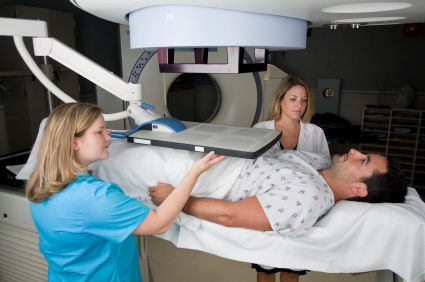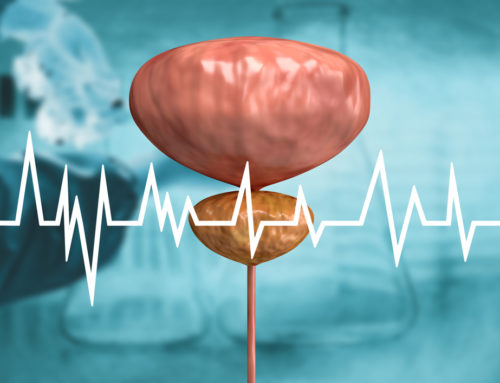Once a prostate gland is found to contain cancer, the next step is to determine the proper treatment. Initial treatment is based on whether the cancer is confined to the prostate or has spread outside the prostate (not as common as in the past due to PSA screening).
If the cancer is found only in the prostate and has not spread (determined by CT scan, bone scan, and blood tests if indicated), treatment can range from active surveillance (also known as watchful waiting), surgical removal of the prostate with or without the Da Vinci Robot, external beam radiation (IMRT), implantation of radioactive seeds into the prostate (brachytherapy), or more recently with HDR Brachytherapy or a combination of HDR Brachytherapy with external beam radiation (IMRT)
Candidates for active surveillance are patients who have two or fewer (out of twelve) positive biopsies, no individual biopsy is composed of over 50 percent cancer, and no biopsy contains a cancer higher than a Gleason Grade 6. (Please refer to August 2011 issue for the article regarding prostate biopsies for explanations.) Active surveillance means having the PSA retested every three months, a prostate exam every six months, and repeat prostate biopsies every 1–2 years. These prostate cancers are slow growing and will not become more aggressive quickly. Patients who are compliant in keeping their appointments may be well served with active surveillance. Exceptions are men in their early fifties or younger, or men who are not comfortable with having cancer in their prostate without undergoing definitive treatment.
Removal of the prostate, either with or without the Da Vinci Robot, is generally for patients with more aggressive disease, meaning higher Gleason scores (7–10) and larger volumes of tumor. Candidates for prostate removal are generally under 75 years of age and in excellent health (including not being overweight). Occasionally patients who undergo surgical removal of the prostate will require external beam radiation following the surgery. This is necessary if there is local extension of cancer into adjacent tissues or evidence of cancer at the surgical margin, meaning there was probably cancer left behind.
External beam radiation, also known as IMRT, is the treatment option for patients who are not candidates for brachytherapy or prostate removal, either because of age, health issues, or obesity. This consists of approximately 40 outpatient radiation treatments.
Brachytherapy, or placement of radioactive seeds into the prostate during an outpatient surgical procedure is a good choice for men who do not qualify for active surveillance because of the volume of prostate cancer (more than two positive biopsies or one biopsy greater than 50 percent), but preferably still have a Gleason Score 6-7 or less.
HDR Brachytherapy is proving to be a more effective and popular treatment of prostate cancer. This procedure requires a 36 hour stay in the hospital where a number of small catheters, or tubes, are placed in the prostate and high doses of radiation are delivered to the prostate every twelve hours for a total of three treatments. At that point the tubes are removed and the treatment is complete.
A combination of HDR Brachytherapy followed by a course of external beam radiation (IMRT) is proving to be a very successful treatment option with few side effects.
All of the above treatment options may have side effects and will require monitoring for the patient’s lifetime. This will be discussed in next month’s issue, as well as treatment for cancer of the prostate that has spread outside the prostate.






